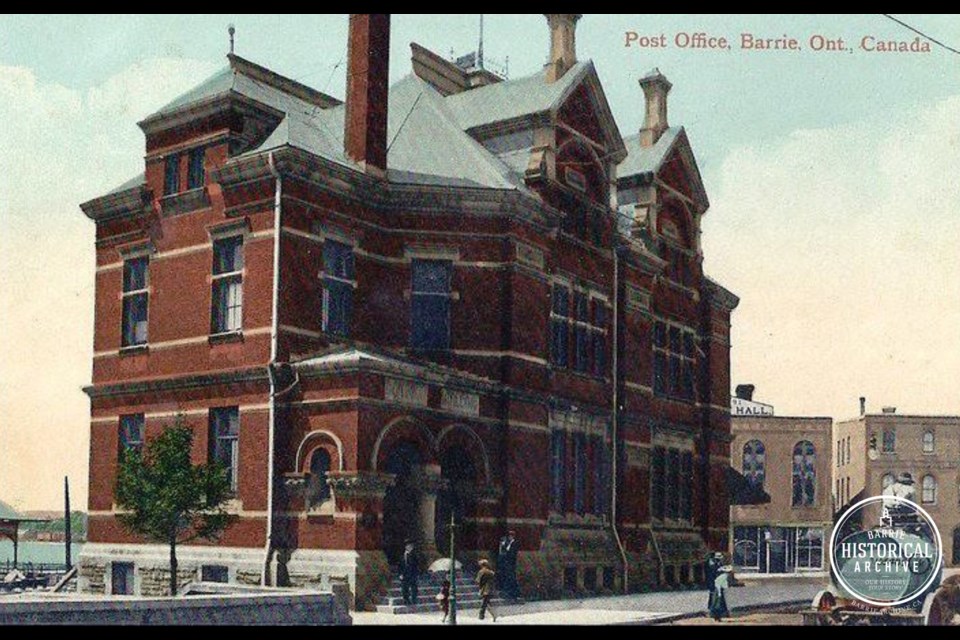In the history of Barrie, there have been plenty of houses relocated from their original location to a different spot in town, or to places farther afield.
This is the story of a house which spent some 40 years on the lot where it was built, and another 85 at its present location, with a stopover of just shy of a week in the middle of Five Points.
I was intrigued when I learned that 81 Maple Ave., the old brick home that houses a real estate office and a paralegal business, hadn’t always been on the corner of Maple Avenue and Ross Street.
With a handful of supplied clues, I decided to see what I could find and I believe I have pieced together its story.
The corner on which this house sits today has been the scene of much industry since Barrie’s early days. It was the site of two planing mills, each built of wood and each engaged in the business of milling, planing and finishing wood products. Not surprisingly, both burned down, one after the other.
These mills were owned by the mightily industrious George Ball. Legend has it that Mr. Ball was shipwrecked on the St. Lawrence River during his immigration from Ireland in the late 1840s, and then run over by a wagon near Toronto as he tried to make his way to Simcoe County. These were early signs pointing to just how undeterred Ball could be when he had a goal in mind.
After these mills burned, Ball crossed the street to the southwest corner of Ross and Bayfield streets, more or less where the north wall of The Ranch country bar sits today. This time, he built with brick and that structure stood for some 70 years. It was torn down to make way for the Woolworth store that preceded The Ranch.
Meanwhile, another man in perpetual motion was expanding his steam driven foundry on the northwest corner of Bayfield and Ross streets. Henry Sewrey’s foundry building stood where the small Tim Hortons drive-thru is today, and slowly made its way west toward Maple Avenue as additions were built.
Sewrey was a machinist, a pump maker, inventor, business man and town mayor. Eventually, he sold out to Dyment & Butterfield and then moved his operations to Bradford Street, a place conveniently located near the rail lines. His old foundry faltered and became abandoned and, by about 1920, it was a bit of an eyesore and a thorn in the side of Barrie council.
What early men of vision had created; a new man of vision saw as an opportunity. Frank W. Livingston was a blacksmith and farmer from Edenvale, northwest of Barrie. Before 1920, most of the Livingston family had migrated into this town and lived at a home on Parkside Drive, while Frank lived with his wife and son on Sophia Street West.
Frank Livingston had a fascination for automobiles and a head for business so he combined the two and began to sell cars. He had a small dealership at 19 Dunlop St. E., just east of Five Points, where he sold and serviced REO automobiles. REO stood for Ransom E. Olds, the famous entrepreneurial car manufacturer. And yes, there really was an REO Speedwagon!
In 1924, Livingston was ready to expand. He purchased a lot on Maple Avenue, just south of Dunlop Street, and had a new garage built. Partway through the construction, the workmen came across a skeleton in a very old coffin and the project came to a halt until the find could be investigated. Local experts imagined it was likely a victim of one of the epidemics, such as cholera or smallpox, that often touched the community in its young years.
Each week, the Barrie Historical Archive provides BarrieToday readers with a glimpse of the city’s past. This unique column features photos and stories from years gone by and is sure to appeal to the historian in each of us.



